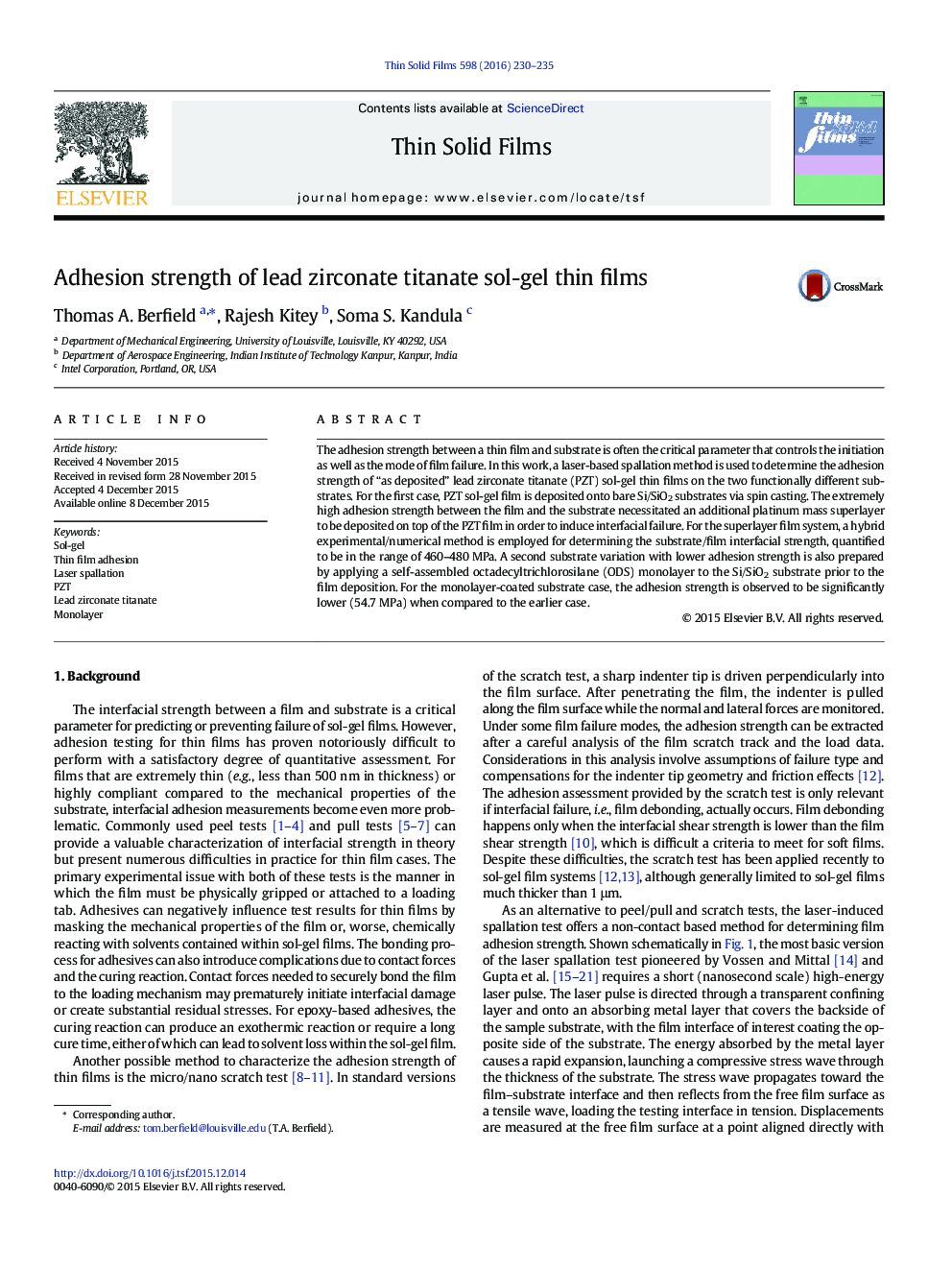| Article ID | Journal | Published Year | Pages | File Type |
|---|---|---|---|---|
| 1664423 | Thin Solid Films | 2016 | 6 Pages |
•A non-contact laser spallation method is used to determine PZT film adhesion.•A mediated self-assembled monolayer is shown to greatly reduce interface strength.•Adhesion strength for even well-bonded thin films was found using a superlayer.
The adhesion strength between a thin film and substrate is often the critical parameter that controls the initiation as well as the mode of film failure. In this work, a laser-based spallation method is used to determine the adhesion strength of “as deposited” lead zirconate titanate (PZT) sol-gel thin films on the two functionally different substrates. For the first case, PZT sol-gel film is deposited onto bare Si/SiO2 substrates via spin casting. The extremely high adhesion strength between the film and the substrate necessitated an additional platinum mass superlayer to be deposited on top of the PZT film in order to induce interfacial failure. For the superlayer film system, a hybrid experimental/numerical method is employed for determining the substrate/film interfacial strength, quantified to be in the range of 460–480 MPa. A second substrate variation with lower adhesion strength is also prepared by applying a self-assembled octadecyltrichlorosilane (ODS) monolayer to the Si/SiO2 substrate prior to the film deposition. For the monolayer-coated substrate case, the adhesion strength is observed to be significantly lower (54.7 MPa) when compared to the earlier case.
